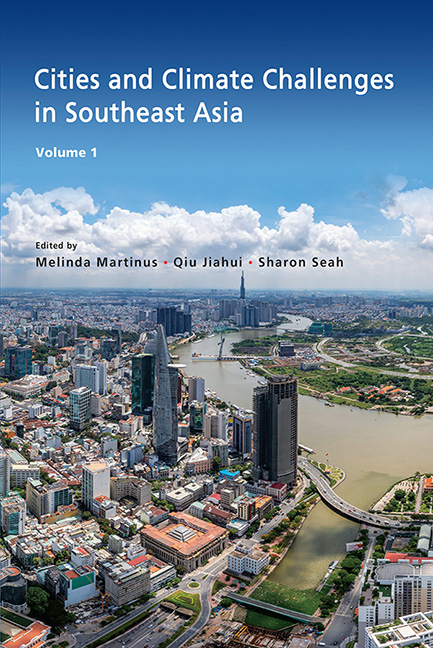1 - Introduction
Published online by Cambridge University Press: 09 January 2024
Summary
Even before climate change surfaced as a critical challenge for cities, the stresses of rapid and mass urbanization were already problems facing many countries, especially developing countries. The nexus between the climate crisis and urbanization is so distinct that the Intergovernmental Panel on Climate Change (IPCC) prepared a regional fact sheet dedicated to the vulnerability of urban areas in its Sixth Assessment Report. The impacts of climate change are clearly exacerbated by urban characteristics such as the lack of vegetation, the abundance of dense concrete structures, and intense human and economic activities that raise temperatures, alter water cycles, and increase the risk of flooding. Coastal cities, in particular, face the added threat of rising sea levels (IPCC 2022). In a way, climate change has not only magnified the problems of urbanization but has also added another layer of complexities to the mounting challenges that cities face.
Southeast Asia is currently home to four major agglomerations or megacities (cities of over 10 million people); Jakarta, Manila, Bangkok, and Ho Chi Minh City (Citypopulation.de n.d.). The speed of urbanization in the region is particularly striking. In the 1960s, only a quarter of Southeast Asia’s population lived in urban areas, today more than half live in urban areas, and this number will increase to two-thirds by 2025 (Leggert 2015).
Southeast Asia is experiencing some of the world’s fastest changing demographics, and also one of the most vulnerable regions to climate change. Three Southeast Asian countries; Myanmar, the Philippines, and Thailand are among top ten countries that have suffered the greatest economic damage and number of fatalities from climate disasters (Eckstein et al. 2019).
On the city scale, the region is also home to the most vulnerable cities to climate risks. A report by consultancy firm Verisk Maplecroft ranked urban centres worldwide based on their environmental and climate risk, revealing that 99 of the 100 most threatened cities are in Asia (Nichols 2021). Topping the list is Jakarta, which experiences land subsidence, heat stress, water scarcity, natural hazards and pollution due to a combination of climate change and human activity. Close behind are other Indonesian cities Surabaya and Bandung, which are similarly plagued with extreme levels of environmental risk.
- Type
- Chapter
- Information
- Cities and Climate Challenges in Southeast Asia , pp. 1 - 6Publisher: ISEAS–Yusof Ishak InstitutePrint publication year: 2023

